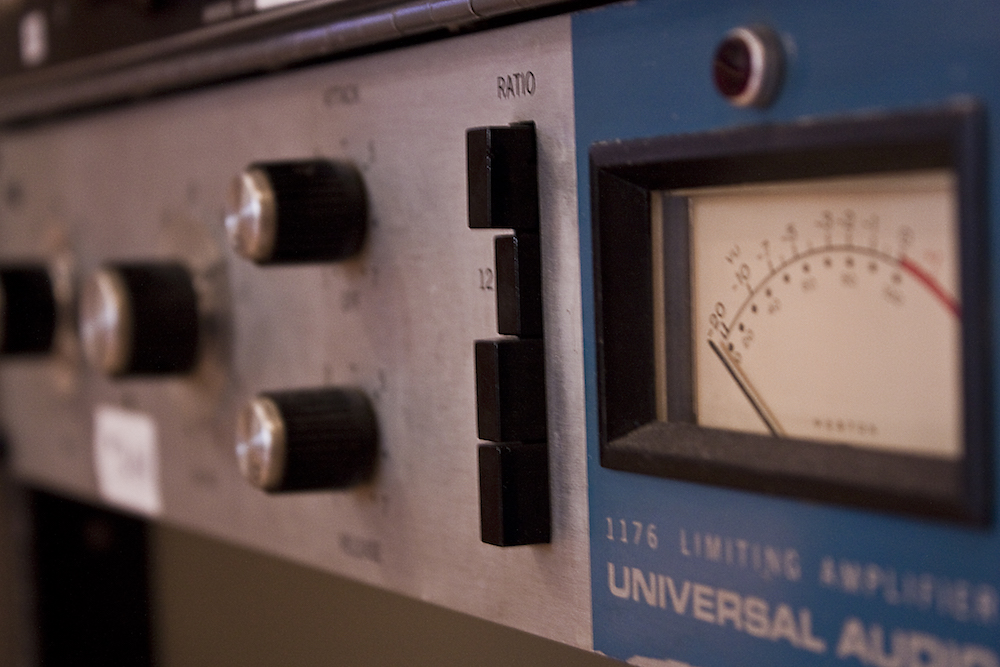Learning to mix an up-front, in-your-face vocal takes practice. Understandably the most important aspect of a song across numerous genres, a great sounding, competitive vocal has the power to stand out from the pack. But how do we even get there? Knowing how to effectively utilize vocal compression, amongst other signal processors, is certainly a step in the right direction.
Understanding compression on paper is one thing–it controls the dynamics of a performance by making the loud parts quieter and the quiet parts louder. But for many of us who are new to mixing, discerning it’s effect on an element can be difficult until we’ve used too much!
While there isn’t a “one size fits all” approach to vocal compression, there are starting points and techniques that can be applied anywhere and tweaked to suit the individual mix. We’ll delve into some of these below!
A Good Starting Point
Working with a single compressor, you’ll want to understand some basic settings to begin with. The idea isn’t to crush the lead vocal, but to experiment with gain reduction to achieve the desired dynamic control.
According to Bobby Owsinski, a renowned engineer, author, and educator, a 4:1 ratio, medium/fast attack, and medium release is a great place to start. You’ll then want to adjust the threshold for about 4 to 6 dB of gain reduction and see where things sit. From there, you can adjust to taste, confident that you’ve begun with a solid foundation.
For further consideration is where to place the compressor in the signal chain, namely pre- or post-EQ. There are many differing opinions and ultimately it all boils down to whichever sounds best to certain ears or in particular situations.
The main takeaway is this: a pre-EQ compressor, first in the signal chain, operates on the unprocessed vocal. Changes made to EQ won’t effect the compressor’s settings. The opposite is true for post-EQ compression, where equalization will alter the way your vocal hits the compressor.
Experiment with the given starting point and both pre- or post-EQ compression to see what sounds good to you!
Compress in Stages
Simply put, don’t be afraid to use more than one compressor on a vocal. For beginners who are likely hyperaware of overusing compression, this may seem counterintuitive, but the idea is this:
Instead of getting 10+ dB of gain reduction from one processor, use multiple compressors with 2 to 3 dB of gain reduction each. You’ll probably find that the desired dynamic control is there without unnatural or very audible compression. This technique is called serial compression.
This is very common on bass, which tends to require quite a bit of compression, though it can be applied to vocals as well!
Parallel Compression
Parallel compression is a go-to technique to push a vocal track forward and make it sound bigger or more aggressive. It’s been used since the ’70s to achieve more punch in a natural sounding way. It often sounds more complicated than it really is, so don’t be afraid to try it out!
In your DAW, make a copy of your lead vocal track and place a compressor on it. You’ll want to hit the vocal hard, so exaggerate your compressor’s settings even to the point in which it doesn’t sound pleasant.
Make sure the original vocal track is at the desired level, and bring up the compressed copy’s fader until it sits just beneath the original. Parallel compression gives the impression of control without sounding completely squashed. It’s fantastic on vocals, but works with almost any individual instrument, too!
Tonal vs. Dynamic Vocal Compression
How you choose to set your compressor(s) will depend on what you hope to achieve with it. Does the song warrant a modern, in-your-face vocal, or something a bit more subtle and reserved? Is the performance fairly consistent, or does it need a ton of dynamic help? Was the vocalist energetic and aggressive, or listless and dull?
The answers to these questions will help you decide whether you’re after tonal compression, dynamic compression, or a mixture of both.
Tonal Compression
This is the lightest use of compression which will smooth out your vocals and give them just a bit of dynamic control. You don’t want to crush the transients because that will push the vocals further back in the mix. Instead, you’ll want to add some musical tone to the performance.
A slow attack and release with just 2 to 3 dB of gain reduction does the trick if tonal compression is what you’re after.
Dynamic Compression
Dynamic compression is typically used to catch the sharpest peaks in the source material and reel them in.
You’ll want a faster attack and release time and a higher threshold and ratio. Whereas the idea of tonal compression is to catch every word and smooth things out, you don’t want to compress everything here–just the peaks!
Generally speaking, using a combination of both tonal and dynamic vocal compression is the key to a better sounding vocal!
